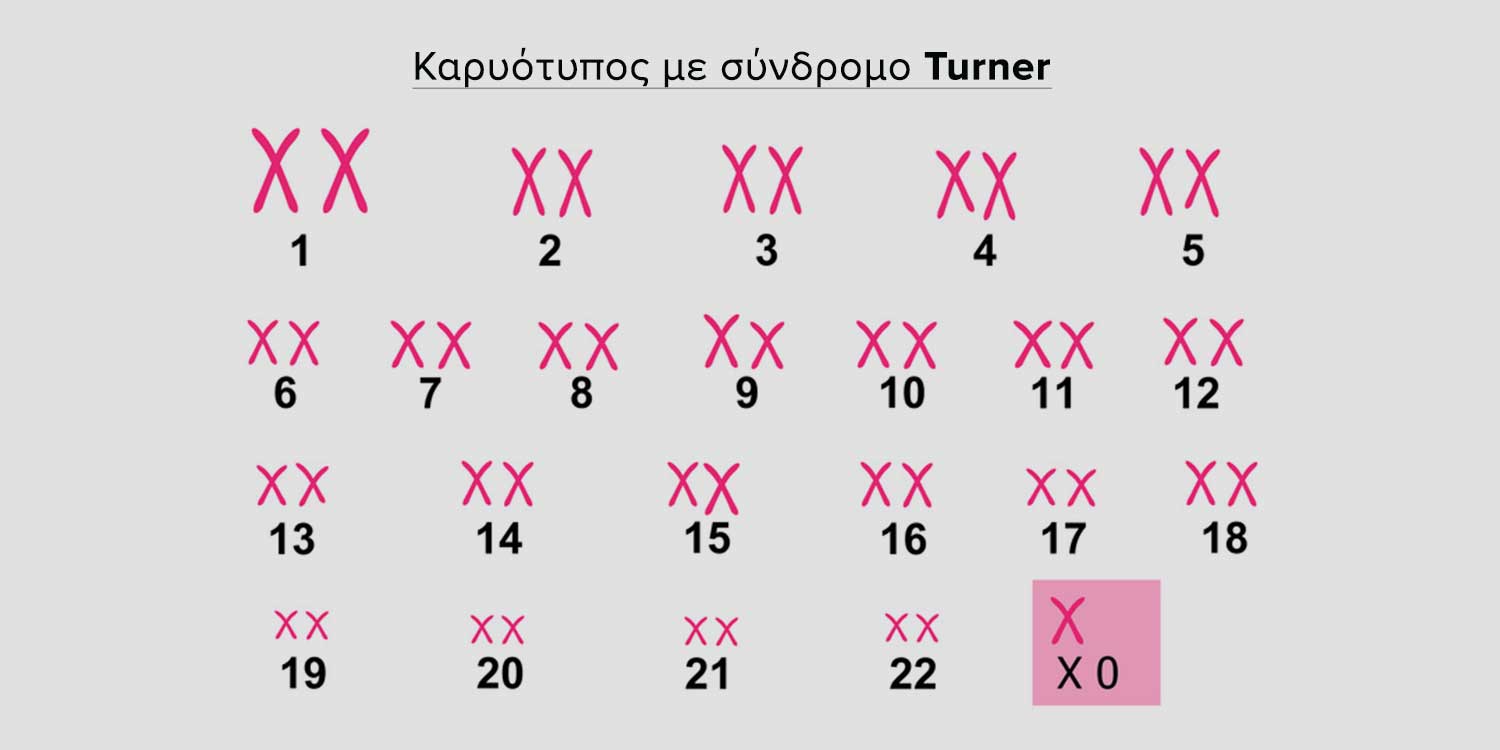Turner Syndrome is a rare, multi-systemic disease in girls and due to the lack or incomplete formation of one of the two X chromosomes. The severity of the symptoms depends on the type of the syndrome (classic or mosaic).
What are the symptoms of Turner Syndrome?
Some of the most common symptoms include, short stature, delayed puberty, swollen extremities (from birth), swollen neck, impaired hearing, webbed neck (extra skin), thyroid disorders, and kidney or heart disease.
What is the incidence of Turner Syndrome?
Turner Syndrome is a rare disease that affects 1 in 2,500 girls.
How is Turner Syndrome diagnosed?
Turner Syndrome can be diagnosed from the birth of the child. A karyotype blood test indicates if all or part of the chromosome is missing. Depending on the case, a pelvic ultrasound may also be performed.
It can also be diagnosed during pregnancy through amniocentesis or chorionic villus sampling (CVS).
How is Turner Syndrome treated?
Once the child is diagnosed with Turner Syndrome, growth hormone is administered to improve the stature of the child. Estradiol and progesterone may be administered at about 12 years of age. Regular monitoring of the child by an endocrinologist is very important, in order to observe the possible occurrence of any Turner Syndrome symptoms.

